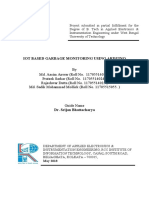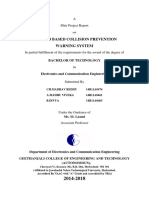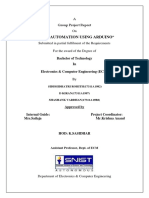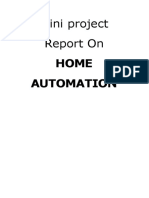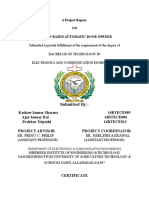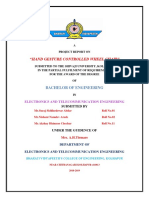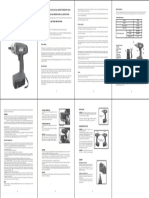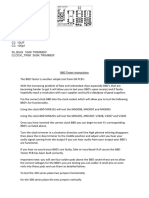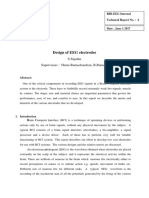0% found this document useful (0 votes)
144 views8 pagesProject Report Front Page
This project report describes an IoT based manhole detection and monitoring system. The system uses sensors to detect parameters inside manholes such as toxic gas levels, water levels etc. It then sends this sensor data to a microcontroller which connects to an IoT module. The IoT module transmits the data to a cloud server. Authorities and citizens can then access this data through a mobile app or website to monitor manholes in real-time. The system aims to improve sewage system monitoring and prevent accidents by alerting authorities about issues inside manholes remotely. It was developed by 3 students under the guidance of Dr. T. Ramaswamy at Sreenidhi Institute of Science and Technology.
Uploaded by
jawalkar bharani kumarCopyright
© © All Rights Reserved
We take content rights seriously. If you suspect this is your content, claim it here.
Available Formats
Download as PDF, TXT or read online on Scribd
0% found this document useful (0 votes)
144 views8 pagesProject Report Front Page
This project report describes an IoT based manhole detection and monitoring system. The system uses sensors to detect parameters inside manholes such as toxic gas levels, water levels etc. It then sends this sensor data to a microcontroller which connects to an IoT module. The IoT module transmits the data to a cloud server. Authorities and citizens can then access this data through a mobile app or website to monitor manholes in real-time. The system aims to improve sewage system monitoring and prevent accidents by alerting authorities about issues inside manholes remotely. It was developed by 3 students under the guidance of Dr. T. Ramaswamy at Sreenidhi Institute of Science and Technology.
Uploaded by
jawalkar bharani kumarCopyright
© © All Rights Reserved
We take content rights seriously. If you suspect this is your content, claim it here.
Available Formats
Download as PDF, TXT or read online on Scribd
/ 8




